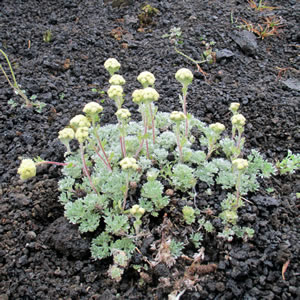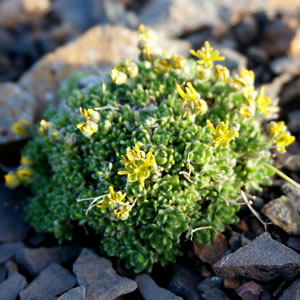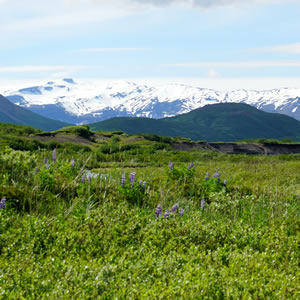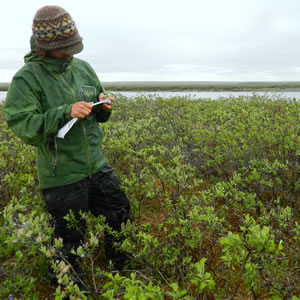Vegetation research at ACCS focuses on the biology of rare and invasive plant species and the distribution, status, and trend of vegetation communities across Alaska. Research on rare and invasive plants includes habitat modeling, biogeography, reproductive ecology and evolution, and ecological impacts of non-native plants. Work on vegetation involves mapping, remote sensing, data consolidation, ecological description, and evaluation of community-scale plant associations to landscape-scale biophysical settings. Additionally, the vegetation group offers a range of services including specimen review and voucher curation, vegetation and ecological survey and monitoring, and conservation planning. ACCS also manages the University of Alaska Anchorage Herbarium (UAAH).
As the state’s Natural Heritage Program, ACCS is a central repository of biological information for Alaska: rare plants and lichens and ecosystems of conservation concern and the Alaska Vegetation Plots Database. Data maintained in these databases are an integral part of ongoing research and reflect the observations of many scientists and institutions. We work closely with botanists and ecologists across Alaska to ensure the most comprehensive and accurate data sets.
Research Focal Areas
People
Lindsey Flagstad, M.S.
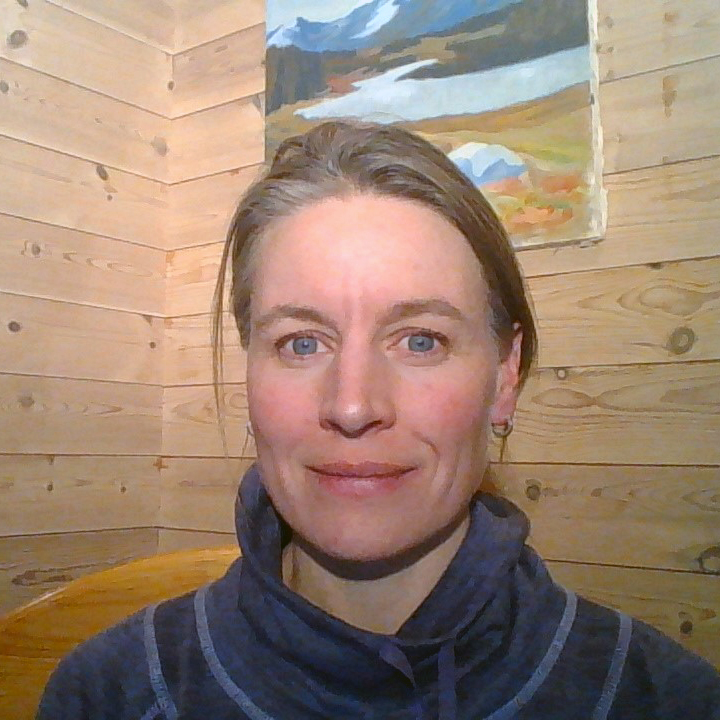
Vegetation & Wetland Ecologist | 907-786-4865 | laflagstad (at) alaska.edu
Lindsey specializes in the identification of plant species, the mathematical classification of their communities, and the digital mapping of their extents. She earned an undergraduate degree in geology from the Colorado College and an M.S. in biology from the University of Alaska; she has been involved with ACCS since 2004.
Justin Fulkerson, M.S.
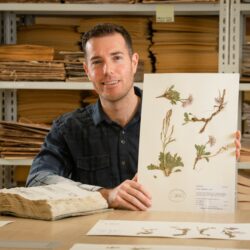
Lead Botanist | 907-786-6387 | jrfulkerson (at) alaska.edu
Justin Fulkerson earned a B.S. in Biology from Humboldt State University and a M.S. in Biology from University of Alaska Anchorage. His research interests are in plant evolutionary ecology, pollination ecology, ethnobotany, and the conservation of rare plants. Justin has over a decade of research and professional experience as a botanist with extensive field experience in Alaska, the Pacific Northwest, and the Intermountain West.
Ryan Choi, PhD
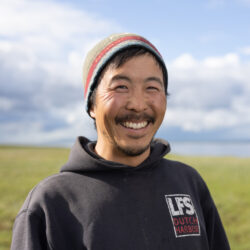
Vegetation & Wetland Ecologist | rtchoi (at) alaska.edu | 
Ryan Choi received a B.A. in Biology from Whitman College and M.S. and Ph.D. in Ecology with an emphasis in Climate Adaptation Science from Utah State University. Ryan spent ten years investigating how climate change and goose herbivory interact to affect sub-arctic coastal wetlands in the Yukon Delta. His research interests also include dryland ecosystems, biogeochemistry, and ecological conservation.
Matthew Carlson, PhD
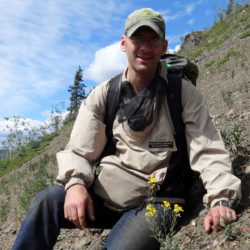
ACCS Director, Botanist | Professor of Biological Sciences | 907-786-6390 | mlcarlson (at) alaska.edu
Matt Carlson received a B.S. in Biology and in Art from the Willamette University and a Ph.D. in Biology from the University of Alaska Fairbanks. Matt has worked as a botanist with the Alaska Natural Heritage Program since 2002. He has conducted floristic inventories across the state and manages the rare plant and non-native plant databases. Along with students and collaborators, Matt studies the ecology of rare and non-native plants in Alaska and plant evolutionary ecology more generally.
Timm Nawrocki, M.S.
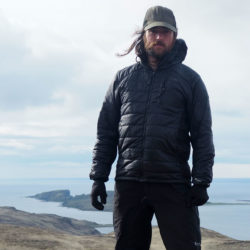
Terrestrial Ecologist | 907-786-6359 | twnawrocki (at) alaska.edu | 
Timm received a B.S. in Biology from the University of Virginia and a M.S. in Biological Sciences from the University of Alaska Anchorage. He specializes in spatial analyses of terrestrial vegetation, soils, and wildlife; remote sensing; and identification of vascular and non-vascular plants. He is fluent in Python, R, SQL, Javascript, geographic information systems (GIS), and web development including a variety of frameworks, platforms, and languages.
Anjanette Steer, M.S.
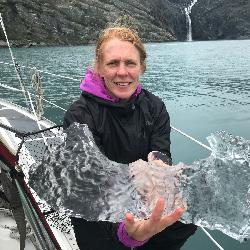
Vegetation & Wetland Ecologist | 907-786-6351 | masteer (at) alaska.edu
Anjanette Steer earned a B.S. in Biology from Pacific Lutheran University and a M.S. in Environmental Science from Alaska Pacific University, where she used GIS to evaluate wetland loss in the Anchorage area. Anjanette has applied her knowledge of Alaska ecosystems to help identify and map rare wetland ecosystems across Alaska and conduct vegetation monitoring in the arctic and interior Alaska.
Preston Villumsen
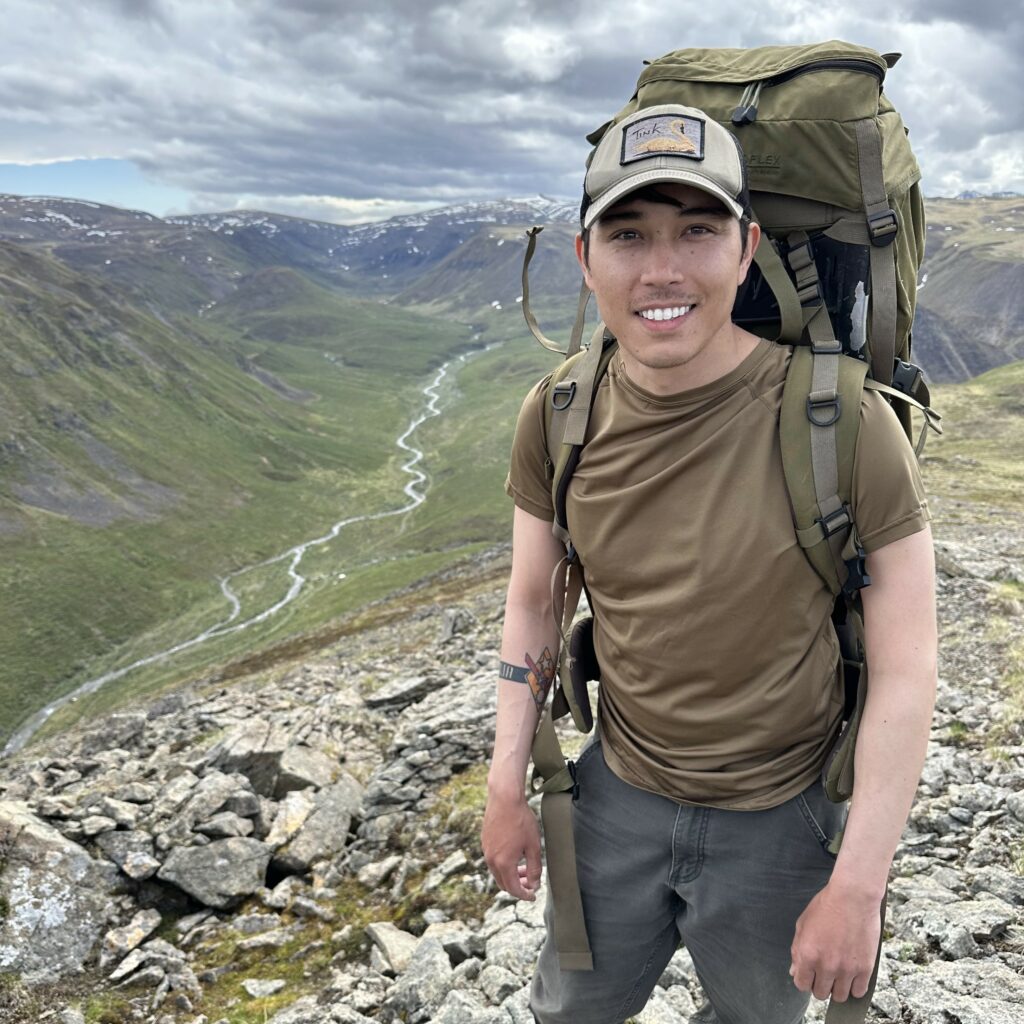
Lichen Specialist | pcvillumsen (at) alaska.edu
Shortly after moving to Alaska, while out photographing insects, a serendipitous encounter with a local botanist inspired Preston to join the Alaska Native Plant Society. It was while on group hikes with this organization that Preston developed a love of lichens and the Alaskan flora in general. Preston graduated with a B.S. in Natural Sciences from the University of Alaska Anchorage in 2024. Among other things, he is currently working on revising a lichen checklist for Alaska.
Colette Martinez
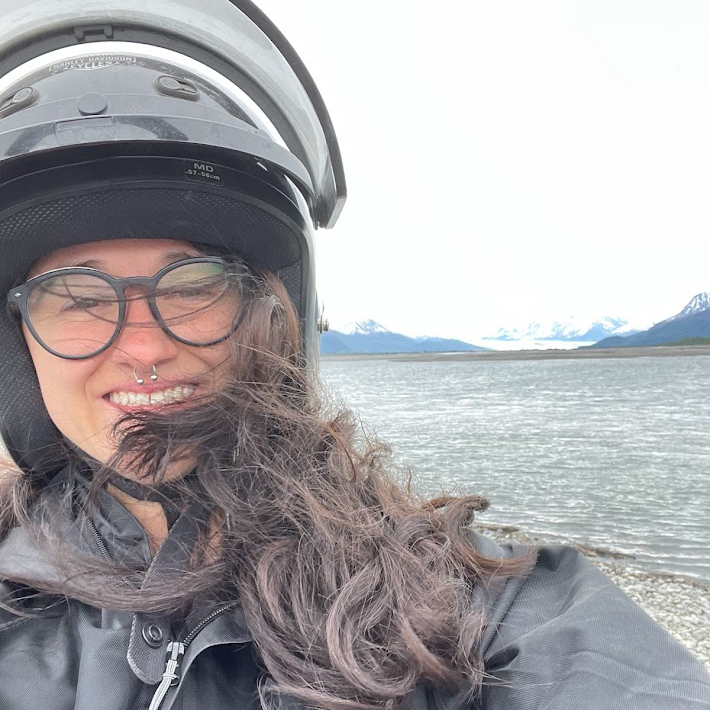
Research Technician | cmartinez14 (at) alaska.edu
Colette earned a B.S. in Biological Sciences from the University of Alaska Anchorage. She became seriously interested in plants after moving to Alaska and getting to play botanist in the UAA Herbarium as a student. She has worked in invasive plant management and native seed collection prior to coming to ACCS, and is currently assisting in herbarium management, rare plant studies, and providing support for vegetation ecology projects.
Affiliates
Sandra Talbot, PhD
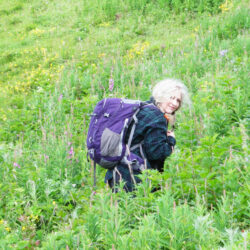
Geneticist
Sandra Talbot received a B.S. in Range and Wildlife Management and a M.S. in Zoology (Terrestrial Ecology) from Brigham Young University, a M.S. in Biotechnology/Bioinformatics from the University of Maryland, a Ph.D. in Biology from the University of Alaska Fairbanks, a BFA (Sculpture and Drawing) from the University of Alaska Anchorage, and an MFA (Visual Arts) from Emily Carr University of Art and Design. Among various appointments in science, she served as a Research Associate at Oregon State University, a Wildlife Biologist at the U. S. Fish and Wildlife Service’s Nowitna National Wildlife Refuge, and a Research Geneticist and Director of the Molecular Ecology Laboratory at the U. S. Geological Survey’s Alaska Science Center. She has conducted genetic and genomic research involving animal and plant species in Alaska and elsewhere in North America and internationally, and floristic and vegetation inventories in Alaska, mostly in the Aleutian Island Archipelago. She has curated and participated in group and solo ArtScience exhibitions. She serves as the Director/President of the non-profit Far Northwestern Institute of Art and Science, which fosters collaborations between scientists and artists in Alaska and the Pacific Northwest.

